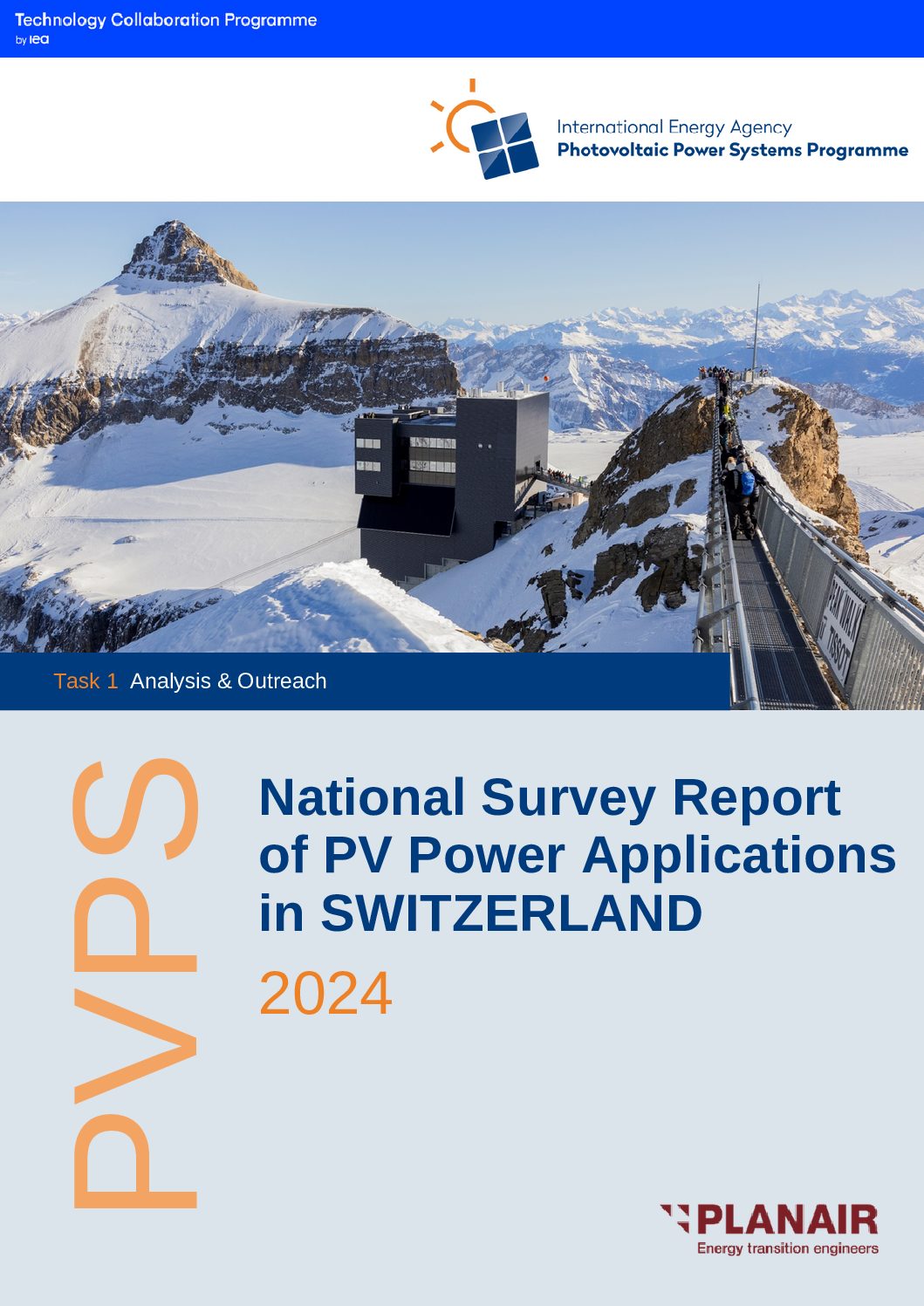October 2025
This report highlights Switzerland’s continued progress in scaling up solar power deployment, with steady growth in PV installations despite a slowdown from previous record years. In 2024, Switzerland added 1,799 MW of new PV capacity, a 9.6% increase from 2023. This brings cumulative installed capacity to 8.17 GW, with PV producing 5,961 GWh of electricity, equal to 10.36% of national electricity consumption.
Key highlights of the report include:
- Market Development: Around 301,210 PV systems were in operation by the end of 2024. Residential rooftops dominated, representing 72% of installations, while industrial systems contributed 40% of newly added capacity. BIPV accounted for about 8.3% of small-scale installations, reflecting strict building and heritage protection laws.
- Policy Framework: The updated Electricity Act (2024) introduced measures such as virtual self-consumption groups (RCP-v), local electricity communities (CEL), and adjusted subsidies to favour larger installations. New ordinances taking effect in 2025–2026 will further support façade PV, carport systems, and agricultural roofs, while guaranteeing minimum remuneration for solar electricity fed into the grid.
- Technological and Market Trends: Nearly 50% of new residential systems in 2024 included battery storage, up sharply from previous years, with costs falling to CHF 654/kWh. Batteries are increasingly used for self-consumption and grid services. Switzerland also prioritised hail-resistant PV modules following severe storms in 2023.
- Economic Impact: The PV sector accounted for an estimated 11,796 full-time jobs in 2024, mainly in installation and manufacturing, with Swissolar projecting a need for nearly 20,000 professionals by 2035. The PV market generated several billion CHF in business value.
- Outlook: Switzerland’s Energy Strategy 2050+ targets 28 TWh of PV generation by 2035 and 39 GWp by 2050. Current annual additions of 1.8 GW put the country broadly on track, but further acceleration and diversification of installations—including façades, agri-PV, and floating systems—will be needed to meet long-term climate and energy goals.
